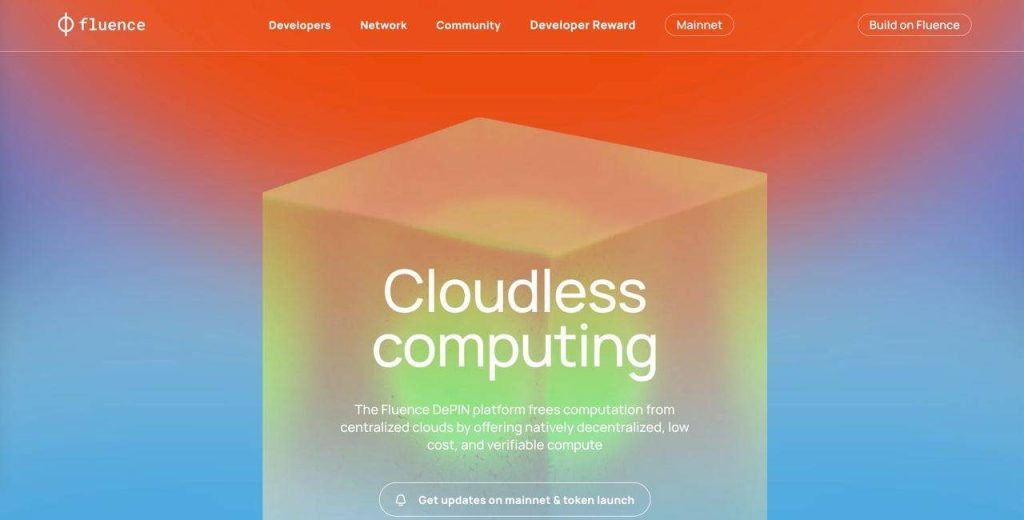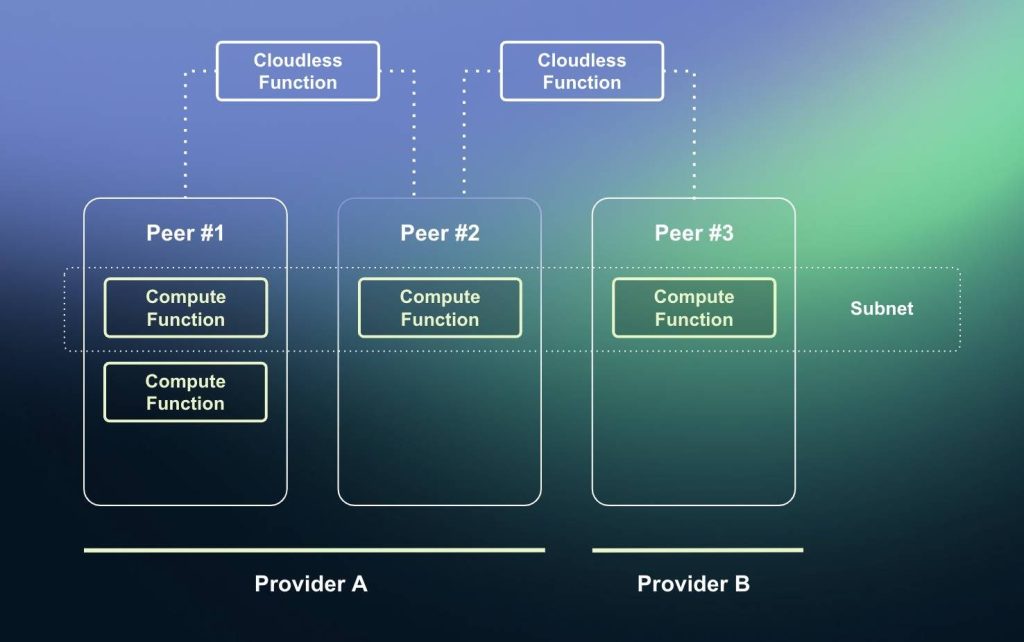Fluence Review: The New Generation DePIN Computing Platform of the Internet
Fluence is a decentralized cloud computing platform and marketplace supported by blockchain. It offers a global, approval-free, scalable alternative to traditional cloud computing.

What is Fluence?

Fluence is a decentralized cloud computing platform (DePIN) and a marketplace for trading computing services supported by blockchain. Its highlight is that it provides a global solution without needing approval, is easy to scale, and is an alternative to traditional cloud computing. With Fluence, developers can build and deploy applications onto a network of computing service providers. Providers must compete based on price and performance to be chosen and rewarded.
Read More: Top 10 Binance Labs Investments To Watch
How Does Fluence Work?
The Fluence protocol brings together a computing resource network and sets up a non-cloud stack for computations. It comprises two key components: Non-cloud functions, powered by the Aqua protocol, and Compute functions, run by the Marine WebAssembly (Wasm) runtime.

Fluence operates solely on the Aqua Protocol, ensuring secure execution without relying on any particular cloud provider. Aqua also acts as the scripting language for the domain, allowing smooth integration of Pi number calculations within Fluence. Commands created using Aqua are known as Cloudless Functions, which can function across various clouds and servers. These functions will not only support customers, projects, and the Fluence protocol but will also manage tasks such as discovery, routing, initialization, network operations, scalability, and fault tolerance mechanisms, all coordinated through Aqua and manifested as Cloudless Functions.
Marine utilizes WebAssembly to allow the protocol to run multiple modules, blending various interfaces and using WASI for accessing effect sets. Marine’s goal is to facilitate Compute Functions, operating in a separate machine akin to the characteristics of serverless cloud computing. It currently supports Rust and C++ programming languages and aims to include more programming languages in the future to enhance the WebAssembly standard.
All Compute Function units in the network will have a storage copy deployed to ensure smooth operation and fault tolerance. This measure protects against node failures due to hardware or network issues. Additionally, developers have the flexibility to tailor the subnet’s operations using Cloudless Functions. This feature empowers developers to implement contingency plans in unexpected situations.
Read More: DePIN and DeWi Come to Sui in Groundbreaking Karrier One Partnership, Upcoming Token Launch
Tokenomics and Use Case
Token metrics
- Ticker: FLT
- Total supply: 1,000,000,000 FLT
Token allocation

- Fluence Labs: 20%
- Investors: 25.4%
- Launchpool/MM: 5%
- DAO Treasury: 34.6%
- Community reward: 5%
- Capacity incentive: 10%

Use Case
FLT is the native token of Fluence, utilized in the following instances:
- Computing service providers earn FLT tokens as rewards. Additionally, providers must stake FLT to engage in the network.
- FLT token holders have the opportunity to participate in project governance.
Team and Investors
Team
Fluence has not yet announced specific details about its development team. CoinCu will provide updates as soon as the latest information from the project becomes available.
Investor
In August 2018, the project secured $6 million in funding from sources like Distributed Global, 1kx, Blockchange Ventures, INBlockchain, and Dekrypt Capital.
Fluence recently secured $9 million USD in Series A funding from investors such as Multicoin Capital, Alameda Research, Tiger Global, Protocol Labs, Polymorphic Capital, Signum Capital, Inception, Arweave.org, and UOB Venture Management.

The Roadmap of Fluence
The latest roadmap for the project has not yet been updated.
Where to Buy Fluence (FLT)
Users can trade FLT on:
- CEX: Bybit, Gate, BingX,..
- DEX: Uniswap
Conclusion
In this Fluence Review, Fluence revolutionizes internet infrastructure with a decentralized computing platform. It offers a secure, scalable, and permissionless alternative to centralized cloud computing, empowering users to control their resources.
CoinCu rates Fluence as a promising investment in computing infrastructure. With ongoing innovation, Fluence could transform the digital landscape and lead to decentralized internet infrastructure.
| DISCLAIMER: The information on this website is provided as general market commentary and does not constitute investment advice. We encourage you to do your own research before investing. |














